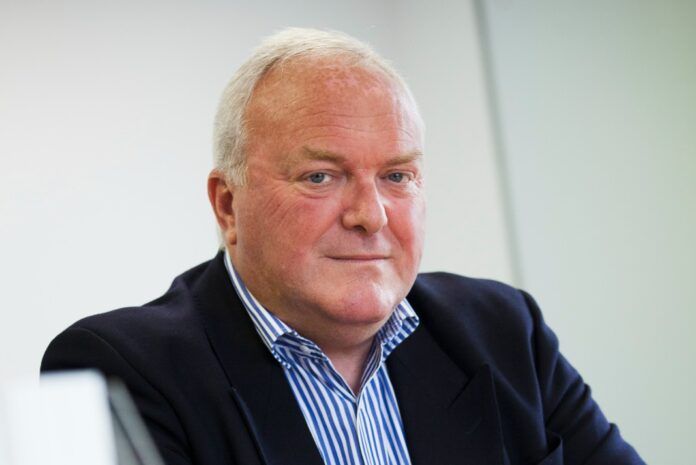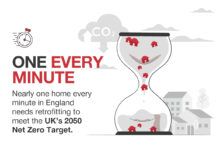
The UK is in recession. The Office of Budgetary Responsibility (OBR) has downgraded its’ forecasts for the economy sharply following the Autumn Statement in November. Prospects for growth in 2023 have evaporated, to be replaced with a predicted 2% drop in GDP.
Rising energy and food prices have, according to the OBR, ‘taken the wind out of the sails’ of the global economic recovery. The OBR report is pretty depressing stuff but while uncomfortable reading there are things that we need to note, because it gives us a sense of the direction of travel for the UK economy and the window and door industry within it.
The first is wholesale gas prices. These are currently four times higher than they normally would be, and the OBR expects them to remain high for at least the medium term. This is an overriding reason for homeowners to invest in improving the energy efficiency of their properties.
Costing the economy £86.4bn, it is also unlikely that the energy price guarantee can be maintained (at least in its current form) beyond April 2023. The energy crisis is going to continue and the cost to the end-user is likely to increase.
Our energy calculator shows how increased energy costs are already reducing payback times on new windows and doors, with savings of up to £1,400 per year. That’s a step change. New windows and doors will pay for themselves in a 5-to-10-year period.
Ask yourself: What would you rather do? Burn cash – literally – or invest it in a home improvement which will materially improve the comfort of your home, enhance its appearance and security, and lower your carbon footprint?
Even if the energy price guarantee was retained in its current form, at £3,000 it still pushes average household energy bills to more than double where they were before April 2022. Without it, the energy analysts at Cornwall Insights warn that typical household energy bills would have topped £3,739 a year!
Energy efficiency will drive window and door sales in 2023 and into the medium term. The flip side of rising energy prices is that, along with food and other costs, it contributes to a squeeze on household incomes. This, the OBR says, will push the economy into a recession lasting around a year from Q3 2022.
In this scenario, we’re already in recession, and so far the market has held up. Things are perhaps marginally slower than they were but we need to remember that the baseline has been the two years of exceptional demand driven by Covid-19 and numerous lockdowns. The OBR also acknowledges that recession will be far shallower than previous downturns, and significantly less severe than the last – the 2008 Crash.
There is, in my view, another factor to consider here and that is household saving. It remains at historically high levels with UK households collectively making more than £140bn of forced savings during the pandemic. That’s around 10% of household income. The OBR has suggested separately that those who can afford to will access savings to maintain spending.
And this is the underlying point. Those with cash to spend will continue to spend it. In the decade preceding the pandemic, the top fifth of wealthiest households accounted for more than half of all home improvements in the UK. That is unlikely to change as we move forward.
It is also worth noting that the alarmist forecasts of a 15% or even 20% drop in house prices in 2023, in response to rising interest rates, are now being revised down to 6 or 8%. Even in the dark days of 2008 and 2009 and the global banking crisis, house prices only fell by 15%.
The economic prospects that the UK faces in 2023 are nowhere near as severe as those we faced in 2008. A correction of the market of around 6% would go some way to correcting the record house price inflation that we have seen since Covid, which brough average house prices to a record high in August 2022 at £296,000.
Mortgage interest rates are also dropping from the October jump in response to the rise in the base rate and are forecast to come back to around 4% at the start of 2023. This will still be a shock to anyone coming to the end of their 1.8% fixed deal but compared to historical interest rate levels, they remain low.
If we take it that energy efficiency will be the foundation for window and door sales in 2023 and 2024, we should also assume that those with money still to spend will want products which enhance and add value to their properties. Heritage, colour and flush casements will continue to drive the market in the year ahead.
Having committed to the Science Based Targets programme and a pledge to cut our carbon footprint by 60% by 2030 from a 2021 baseline, and as the winner of the G22 Sustainability Initiative of the year, it would also be remiss of me not to mention sustainability. It needs to be part of our offer, your offer and a collective offer from the window and door industry. Energy efficiency, carbon footprint and wider sustainability go hand in hand.
It is not ‘the’ reason to buy new windows and doors. Energy efficiency as we have said, and other evergreen drivers, appearance and security, will drive sales. It is, however, a point of difference. And when the market is more challenging, the ‘margins’ of your offer assume far greater importance.
Pre-pandemic in 2019 we were working hard. In 2020 and 2021, and for much of 2022, new business has been served to us on a plate. Now we need to get back to working, marketing our products and our service offer, and start hustling again.
Rob McGlennon
Managing director, Deceuninck



